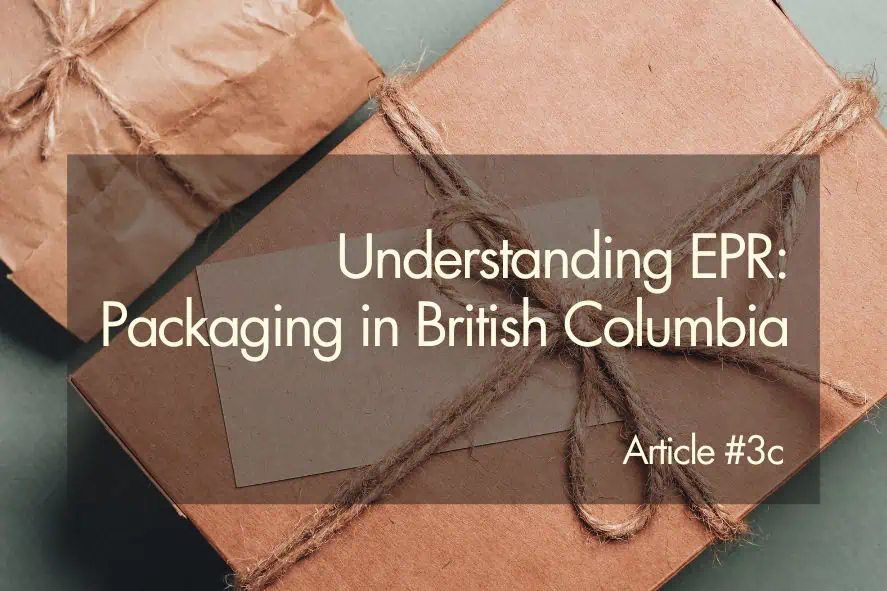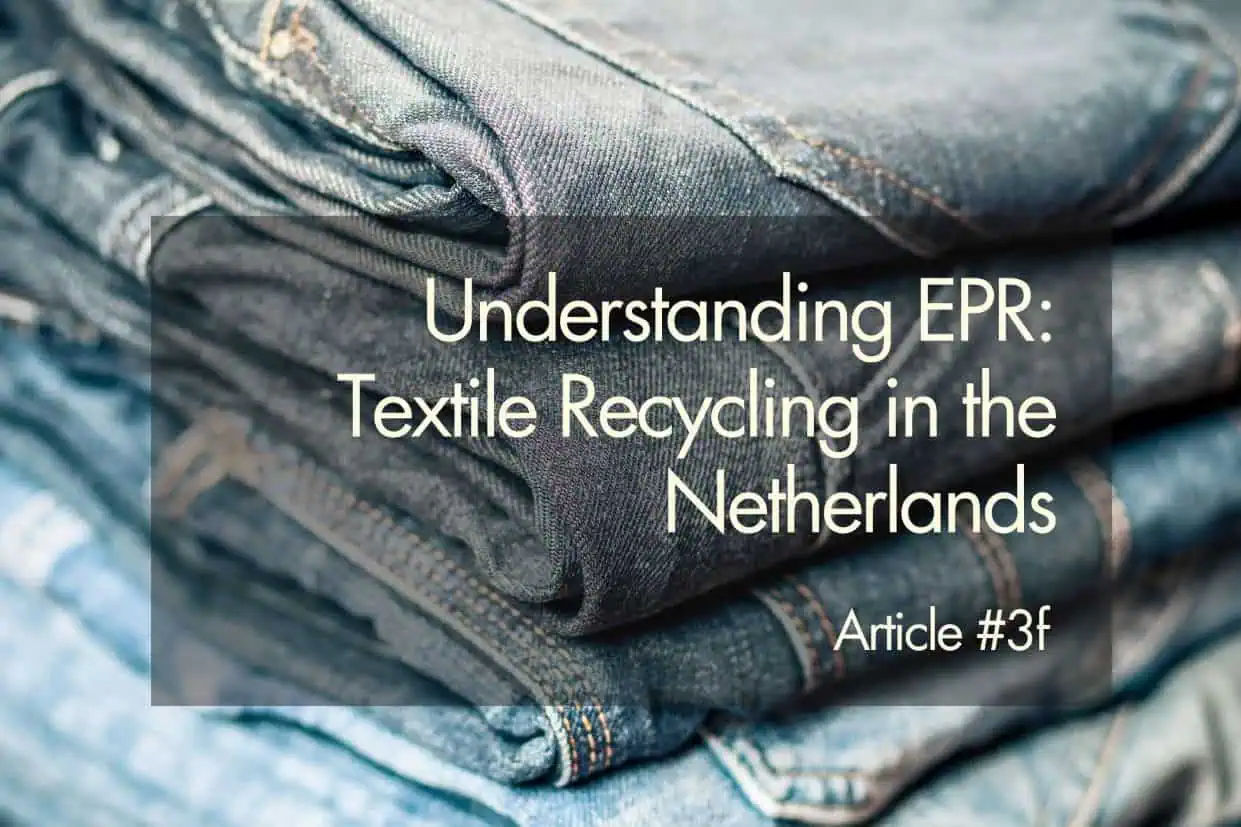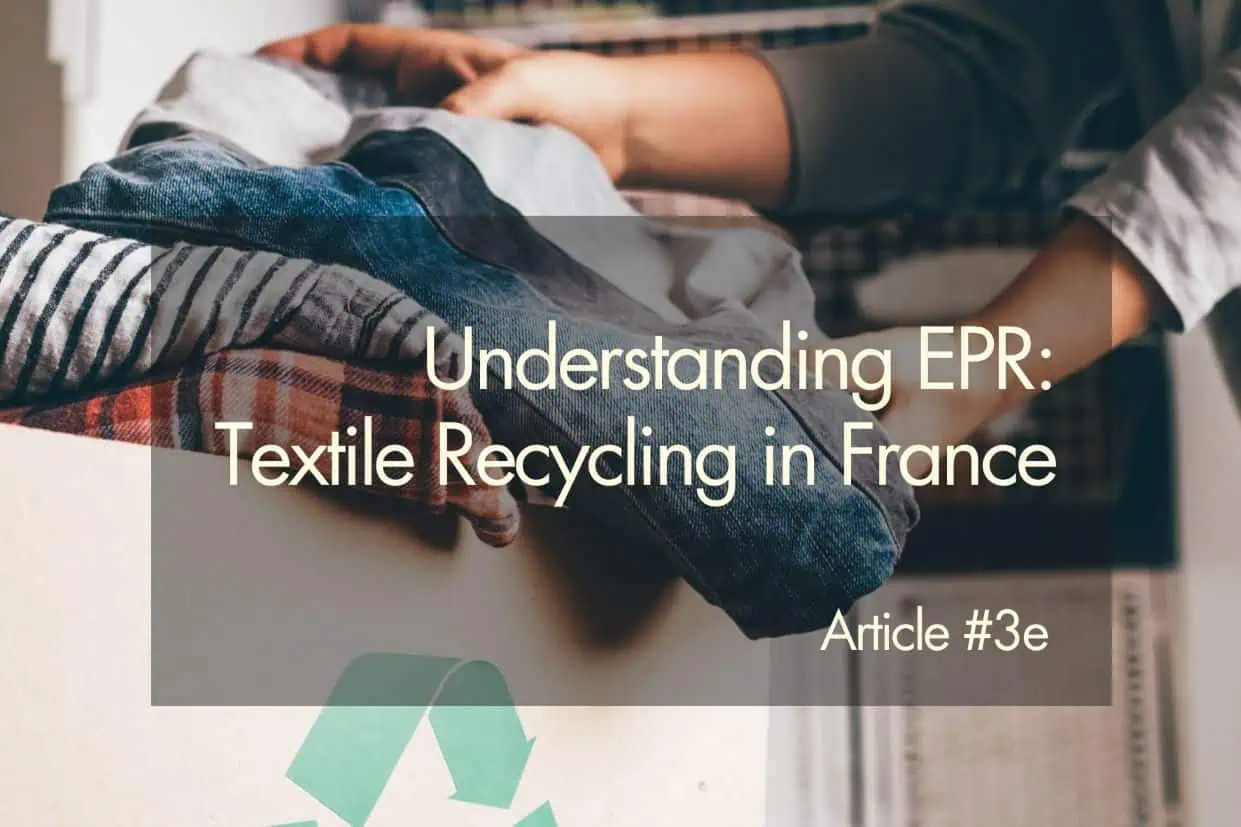Lifers: Navigating Fashion’s Impact on Climate, One Life Jacket at a Time
- Mariel Solis Cartes & Deborah King
- Fashion, Sustainability
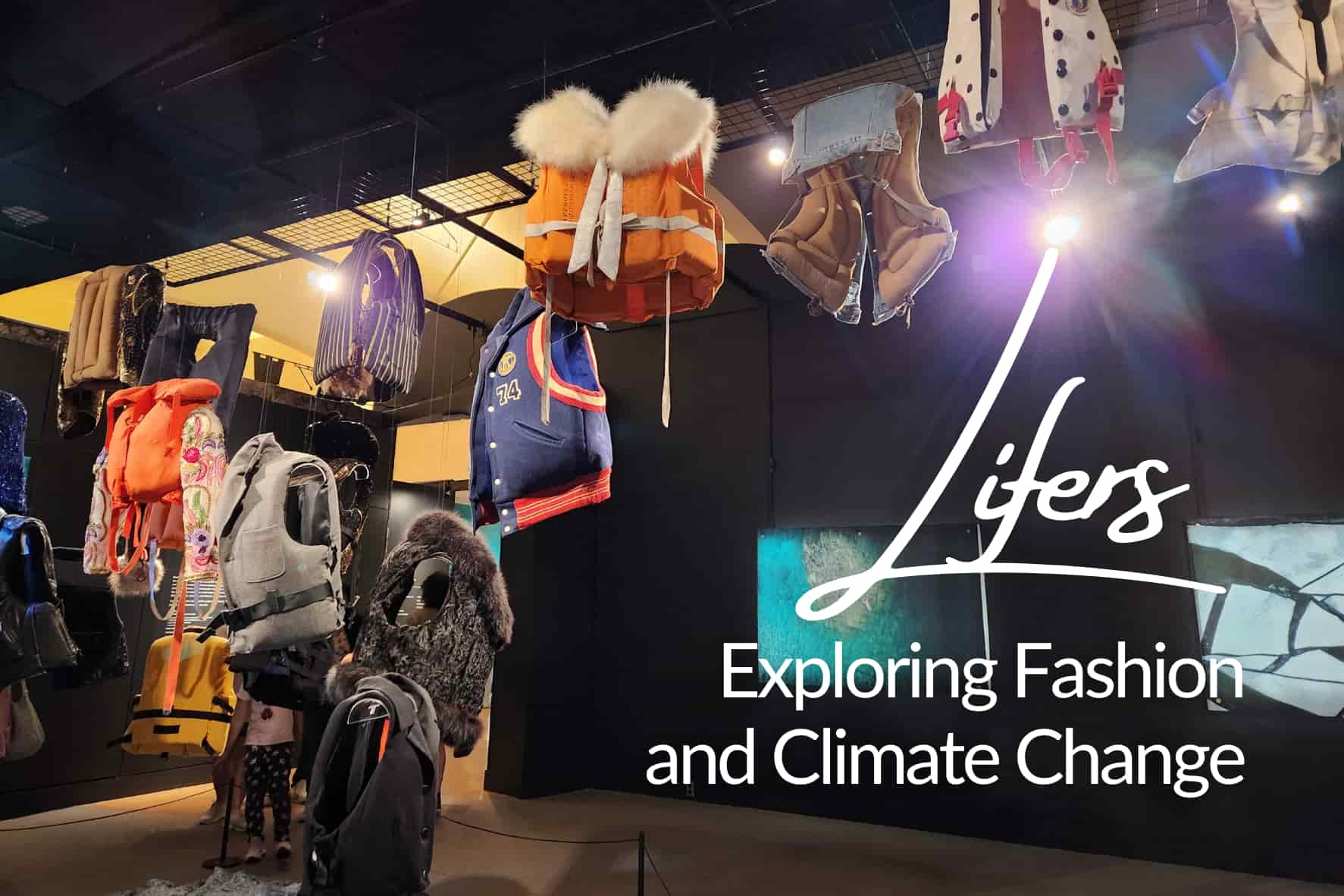
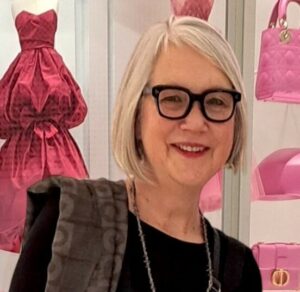
Dr. Alexandra Palmer is a respected figure in the world of fashion and textile history, known for her significant contributions to the field. Recently honored with the Chevalier dans l’Ordre des Palmes Académiques by the Consul General of France, Toronto. She is recognized for her valuable service to universities, education, and science.
As a Senior Curator of Global Fashion and Textiles at the Royal Ontario Museum, Dr. Palmer has played a key role in creating exhibits that go beyond showcasing clothes. They explore the stories and cultural impacts woven into each garment, offering a unique perspective on the history of fashion.
With a keen eye for the intersection of art, history, and material culture, Dr. Palmer’s work reflects a commitment to helping people understand the dynamic and influential role of fashion in human history. Both her scholarly research and her work as a curator contribute significantly to the academic discussion on fashion history.
In her latest exhibit, Lifers, Dr. Palmer challenges visitors to confront the profound impacts of fashion consumption on climate change and our planet. Join us, Deborah and Mariel, as we engage in a Q&A with Dr. Palmer, to unravel the stories, inspirations, and impactful messages behind Lifers.
Question:
The Lifers exhibit is described as an SOS during the Anthropocene. The artist, Noelle Hamlyn, creatively uses repurposed life jackets to spur conversation about the negative impacts of fast fashion and excess consumption. How does Lifers navigate the complexities within the fashion industry, inviting viewers to consider the broader implications and challenges associated with their clothing choices?
answeR:
Lifers is a critique of the fashion industry and the SOS is a bit of a pun really. A play on words because these are life jackets. Obviously, if you need a life jacket you’re in trouble. And we’re in trouble with the fashion industry through over-production and certainly the way that we use resources.
We seem to have moved further and further away from understanding value and meaning in our clothes, which is more than just a price. We have lost the connection to really “making”. So if you’re actually making a thread and then having to dye it, and then having to weave it, you’re going to be a lot more respectful of that material at the end of the day. If you just sit at home and go on the computer, when Amazon sends you something you usually have no idea where or how it was made or what it is made from. We are very disconnected from where and how our clothes come to us.
COVID-19 was this moment where there was a pause. Everyone wanted to help each other and think about things and sustainable fashion was part of that. The idea of sustainable fashion rose a bit and fashion was more considered as supply chains were broken. But now consumption and production have gone back up. It’s very, very complicated because there are so many players. Fashion is an economic driver for a lot of countries and people. There is no easy solution and there’s not one solution of how to be more sustainable.
So Lifers is really to begin the conversation in the museum and in a public way so that people can start thinking and hopefully understanding that fashion overproduction is a problem and it’s not going to go away. You can’t shop your way out of it, and you can’t second-hand shop your clothes out of it either. But you do have personal choice. You can make intelligent decisions when you shop. You can make a statement with your pocketbook and start dealing with this in a way that anyone can.
[In the exhibit, Noelle] salvaged real life jackets and then “dressed” them in second-hand vintage clothes that are recut and refit to fit the life jackets, which are not normal body forms.
Each Lifer kind of symbolizes a person. They float there in space, surrounded by a soundscape as well as photography of them being worn in the gorgeous waters of Georgian Bay. Geoff Coombs’ wonderful photography was taken in summer and in winter ice. Noelle’s Lifers are life-like. She says we’ve hit the iceberg, like the Titanic, we are sinking. And I like this statement that we hit the iceberg. And it’s not a pretty story, we know the ending, so let’s just pay attention. Can we change the ending?

Question:
When taking a closer look at each life jacket, there is so much effort and detail behind every piece that makes them unique and irreplaceable. Fast fashion on the other hand embodies the total opposite. It also encourages consumers to buy disproportionately and generate waste rapidly. Could you delve deeper into how this continuous cycle impacts the environment, squeezes producers, and perpetuates a wasteful system?
Answer:
The acceleration and escalation of production are actually the problem. This idea that fast fashion stores must have constant new stock every day, 3 times a week is unsustainable. There’s a constant rotation and restocking. So, it’s not like you go into a store one week or go online, and see your style and think, “Okay, I don’t really like it or I bought the one I like.” [Instead most people] will immediately throw in more and more and more and more. It’s this idea of temptation and desire that has a lot of historical baggage attached to it, particularly with women and feminist theory and medical theories and all these ideas of how to control women’s, supposed, insatiable consumption.
And [stores] know that they’re not going to sell it all. They know there are going to be leftovers. They know they’re going to mark it down, and people know they’re going to mark it down. So [people] wait for the sale and it’s this horrible vicious cycle. More is more.
And of course, there are the actual people at the other end who’ve made the original garment, who’ve made the clothes. Producers and manufacturers are being squeezed for money because everything’s become cheaper and cheaper. We seem to not have hit the bottom. Companies like Shein in China, are doing fantastically well in terms of numbers of products and sales, and their clothes are really cheap. Unbelievably successful business if your way of measuring success is money – lots of money, then they’re very, very successful. They are also a disaster for the planet with the use of virgin fossil fuel required to make polyester. It’s non-renewable [energy], all this stuff, CO2 emissions, [poor working conditions]…it just goes on and on. So, you can’t stop it, but you can not buy it.
And that’s, hopefully, what people can take away from Lifers, that you actually do have a choice and you can affect a change. Small and insignificant as it may seem, but if everyone does that, it matters.
Question:
In the Lifers exhibit, references such as the Titanic disaster are used to draw attention to the environmental challenges tied to fashion consumption. Could you share insights into how the exhibit aims to inspire a positive perspective on addressing overconsumption, waste, and the impact of fast fashion? Additionally, how does Lifers encourage visitors to reconsider their role in fostering change by making more mindful choices?
Answer:
There’s information before you get to the actual installation, in the [prelude space] about the problem of overconsumption, waste, and getting rid of things – just because it’s out of sight doesn’t mean it’s vanished into outer space. It aims to make visitors aware of the bigger problem, and the situation with climate change and particularly fashion that it is a big and overwhelming problem for the planet.
Once you start reading about it, you just really want to put your head in the sand because it’s very depressing. And it doesn’t make fashion that fun anymore, but it can be fun and it can be all those things. So, we really do want to have a positive way of looking at this rather than doom and gloom, because it’s very easy to do that and it’s not helpful.
And what we would like the visitor to take away from the exhibit, is that they can make a change by just thinking about what they buy and choosing another kind of product or maybe not buying it, mending, repairing all those things that used to be very normal. Encouraging visitors to consider making a change by being mindful of their purchases and opting for alternative products or repairing items.
What we would like people to do is to begin to think about their consumption, and to think about fashion in a slightly more serious way. It can still be fun, and in a way more personal, because you’re taking more responsibility for your clothes. I certainly don’t have the answers and neither does Lifers, but the point of the show, and what we would like people to do, is to begin to think about it.
Question:
Though information is much more accessible today, why do you think there is a disconnect in consumers’ awareness of the true cost behind garment production? Should we find better ways to communicate with younger generations to make a change in their behavior?
Answer:
Do I think we should, yes, absolutely, yes, yes, yes, yes. And I think that’s the key.
That’s why I enjoy teaching a class at the University of Toronto, Considering Sustainable Textiles and Fashions in the Age of Climate Crisis, because the students are really interested and smart. I don’t have the solution, but I’m a guide in terms of talking about different aspects, and how to understand the situation, and how to find your role in it if you want to have a role. If you want to just shop better that’s fine too. I want to teach them how to get through the web and mountains of articles and sites that are conflicting and offer nonsensical information sometimes. I aim to help them feel that they are equipped to evaluate what they read and hear, and sift out what’s really important. We are inundated by social media that has a lot of marketing (or lies?) and misinformation, and also truths.
But I do think it’s important not to feel that you have to look like a bag lady or that you can’t have fun or that you can’t be creative with sustainable fashion. And in fact, my hope would be that this actually stimulates creativity. We need incredible ingenuity and creativity to get out of this climate crisis. And we need really good technical solutions from scientists, engineers, and people rethinking things in very big ways because the fashion system is an old system and you can’t just turn it around like that.
If you look historically there’s a lot to learn about natural dyes, about using alternative materials, cactus, fungi, etc. All these materials have been used for centuries. And they are indigenous materials to a lot of cultures and they’re wonderful fibers, but there’s this issue of scale. How to make it affordable, how to make it accessible, how to make people understand how to use them so it’s not a sort of crafty, hippie thing – unless that is what you are after- and that it can become art and does not have to be expensive. So that hip and beautiful sustainable fashion is not unaffordable for the masses.
But there are already lots of really amazing things. Stella McCartney is very interesting in her absolute dedication to this. And so there are these kinds of lights of designers who are doing what we call luxury fashion and doing this very high-end, very avant-garde stuff. They are the leaders. We need to learn from them and make it more economically accessible.

Question:
What key takeaways or messages do you hope visitors will leave the exhibit with regarding their role in addressing climate change through their clothing choices?
Answer:
Because Lifers is an art installation, it’s an abstract idea. It’s kind of this crazy thing with these life jackets, funny shaped clothes floating in space and a soundtrack with survivors of the Titanic and these very luscious photographs. Are you going to relax? Are you going to enjoy it? Are you going to do something? Well, it’s probably all of the above, we hope.
Fashion is about how you look, how you portray yourself, who you are in the world, how you are represented, how people see you, how people read you, how you wish to be, how you wish to be seen, wish to be understood. We don’t care what people wear, but it’s just important today to have knowledge and a conscience when shopping.
Shopping and consumption are very much about the future – a kind of mysterious promise of the future. We imagine that if you buy this really beautiful pink dress for a party then something fabulous is going to happen to you. So, there’s this kind of Cinderella aspect to fashion and shopping that is completely ephemeral and probably not true. But it’s definitely part of the appeal.
So the exhibit hopes you will just think and be aware when you bring something into your life, into your home. What are you going to do with it? How are you going to get rid of it? And that’s actually being a responsible shopper and not buying more than you can afford, and being responsible in terms of the end of life of things and what you’re going to do with it.
Most people are really nice and smart and want to have a beautiful world for their children and grandchildren and themselves and fashion’s a part of that. It’s part of having a beautiful world and feeling beautiful and comfortable, but it does come with a price that’s not the wallet.
And that’s not easy, because we don’t have good solutions yet and fashion can be hard to recycle. It depends on the materials, and most are made from many different things. So it’s difficult, but just begin to think. Just start and it gets easier. It’s this idea of having agency and I do think that every little bit helps. It’s not going to hurt.
Question:
Is there anything else you want people to know about the exhibit?
Answer:
There are lots of puzzling things about the exhibit – just physically the way it looks- this odd thing of life jackets dressed up, they represent a variety of ages and genders and are like characters. But also the Lifers are beautifully made, hand-crafted and everything about the exhibit, even the “water” on the floor, is made from recycled textiles.
When we do fashion exhibitions ROM staff usually really like working on them because they’re fun, but there was a real passion in the team to really try to make the show sustainable throughout, and everyone took on the challenge. Everyone on the team was so into it. Everyone loved learning about the problem of fast fashion.
We worked very hard as an exhibit team to be sustainable in the design, recycling some materials from the museum, not painting the walls, and all sorts of things that we re-used. It’s hard for design because suppliers aren’t used to those things. They didn’t know how to bid on the job reusing materials, not new ones. So it’s this whole kind of cycle of learning, or re-learning. We’re at the bottom of the learning curve of how to integrate sustainable thinking and practical circular design ideas into our lives. It applies across the workplace, and across our homes. But you have to start somewhere, and you’re going to make mistakes, but don’t wait, start, do something. Every action makes a difference.
Lifers is a thought-provoking exhibit that intertwines art with a critical message about the fashion industry’s environmental impact. It invites you to explore beyond its captivating displays and reimagine your relationship with clothing. It compels you to consider the subtle power your choices hold in shaping a more sustainable fashion future.
This immersive experience is at the Royal Ontario Museum until February 19, 2024, and is free with General Admission. This holiday season, why not embark on a journey with your family to witness Lifers, sparking conversations that transcend the gallery walls into our everyday lives? Let this be a moment of reflection, a call to action, and an inspiration for conscious consumption.

Deborah King
Deborah is a sustainable fashion expert located in Toronto, Canada. She’s an Industrial Engineer with a post-grad in Sustainable Fashion Production. She grew up on the tiny island of Tortola in the British Virgin Islands, and has been sewing her own clothing since the age of 10. She founded Global Measure to help authentically sustainable and ethical fashion businesses stand out from the greenwashing noise through third-party certification.

Mariel Solis Cartes
Located in the vibrant city of Toronto, Canada, Mariel brings a blend of creativity and conscience to the world of fashion. With a post-graduate degree in Sustainable Fashion Production, she aims to contribute to the future of the industry, harmonizing style and substance, with a focus on more environmentally conscious practices. Hailing from South America, she has infused her cultural heritage into her journey, recognizing the power of fashion with purpose and meaning.

